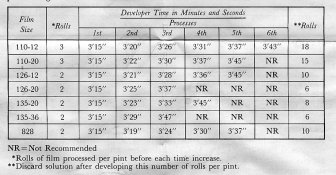StoneNYC
Member
I mix up a 5L kit and it lasts me for months in a sealed bottle with no air. Used, I have kept chemistry for 2 - 3 months and fresh up to 6 months, but the key is NO AIR EXPOSURE.
Actually, I use Nitrogen gas as the 5 L bottle is used, and I store odds and ends in 1L or 1/2L bottles filled to the top.
PE
Ok so if I don't have access to nitrogen gas, and only store in the brown glass chemistry bottles (because the owner insists they don't feel comfortable with plastic bottle storage in the basement) then how do you keep it air tight? I've seen marbles mentioned so I tried this, but this only meant spilled marbles into my paterson tank and cracked glass chips in the developer. not putting the marbles in the developer, but when they spilled out while I was filing the paterson tank, some went down the garbage disposal too, it was a disaster...
That's why I'm trying for smaller bottles of concentrate.
And you say no air exposure, so this means period right? So how can I mix the powder and water without exposure? Or do you just mean constant air exposure, so if I fill the bottle to the brim and there is just a tiny air bubble, is that good enough for a few months do you think?
Or is there some tool I'm missing that does this?
~Stone
Mamiya: 7 II, RZ67 Pro II / Canon: 1V, AE-1, 5DmkII / Kodak: No 1 Pocket Autographic, No 1A Pocket Autographic | Sent w/ iPhone using Tapatalk








 thanks!
thanks!



